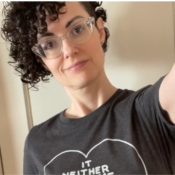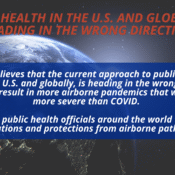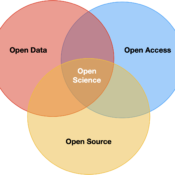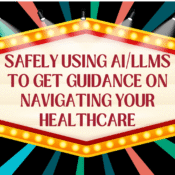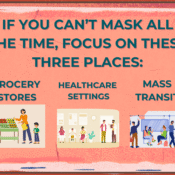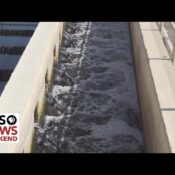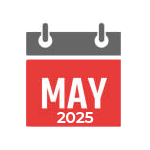
Pandemic Protocols: How COVID Changed My High School
from a guest blogger
Infectious diseases come with every major civilization and every cultural rendezvous throughout history. Though our increasing interconnection spreads viruses farther and faster, the advancements that come with globalization allow us to protect ourselves more effectively. During the COVID pandemicA global outbreak of a disease. in 2020, protecting our children meant online schooling from home–for some, this lasted a couple of months, and for others, this lasted for an entire year. Every district tackled this problem differently and it was sometimes difficult to tell which approach was right not just for safety, but also for well-being. As someone who was in high school during the COVID pandemicA global outbreak of a disease., I want to offer my perspective on how my high school implemented pandemicA global outbreak of a disease. protocols in what I think was a model approach to keeping students safe and sane.
In my freshman year in 2020, my English class tinkered with Zoom as a precaution the day before Easter break. Halfway through our break, we got that email telling us not to return to school for the next couple of weeks. Those weeks turned into the rest of our semester, and it extended into November of the next one. Many of my friends didn’t return to campus at their respective high schools until 2021.
When November began, my high school divided the students into “Cohort A” and “Cohort B” by last name alphabetically, which was intended to reduce the number of students susceptible to transmission on campus. Cohort A was welcomed back to campus for a four-day week with Wednesdays off while Cohort B stayed at home and tuned into class via Zoom. The next week, the cohorts switched. Some students opted to stay at home for the entirety of the pandemicA global outbreak of a disease., and those who developed symptoms of COVID were required to stay home, though this happened rarely. The linchpin to the in-class and Zoom classes blending simultaneously was a camera set-up called the “Owl Pro” that was positioned in every classroom. This camera-microphone device captured the classroom experience for the cohort at home and freed the teachers from having to monitor the Zoom’s microphone and angle. An important factor in my situation is that my high school is part of the San Francisco Archdiocese, which had different regulations and requirements for allowing students back to school than the public schools in my district, which didn’t allow anyone back on campus until as late as 2021. We also had access to resources and equipment like the Owl Pros mentioned above that many schools did not have. But I believe that my school’s approach, emphasizing community just as much as physical safety, is replicable anywhere.
My school took several concrete steps to minimize the potential spread of COVID while keeping as many opportunities for in-person interaction as they could. First, they minimized the number of students concentrated on campus and rotated them instead of keeping everyone at home. This allowed for both social distancingKeeping physical space between individuals to prevent disease spread. in the classroom, and for meaningful interactions between students in-person, which I can’t emphasize enough is essential to a student’s well-being. Second, they had safety measures in place including mandatory masking, a self-assessment questionnaire required every morning to check for symptoms of COVID, and weekly COVID tests to be shown at the gate before coming on campus. Third, they had air filtrationThe process of removing particles from the air or liquids using filters. machines in every classroom and kept every window open throughout the day, which made the whole semester was chilly but apparently safer as a result, as there were no major outbreaks of COVID within the community, only a few isolated cases if any. Fourth, they allowed students the option to continue online for the whole semester and to switch cohorts to be with their friends to make the experience more comfortable than scary.
The weeks that I was in session felt like any normal semester at high school (except for the mandatory masking). I got to eat lunch with half of my friends, see them in the hallways, and work with them effectively in class. Not only was the cohort system quite manageable, but we were able to return to school in full (with the addition of mandatory masking) all through 2021. No one close to me even contracted the disease during the semester to my knowledge. My sophomore year was only curtailed slightly rather than completely upset by the COVID pandemicA global outbreak of a disease. because of my high school’s emphasis on maintaining community. The year quickly switched from isolationSeparating sick individuals from healthy ones to prevent disease spread. during lockdownA public health measure restricting movement to prevent disease spread. in the summer to an unconventional but laid-back semester that I enjoyed!
So in the event of the next pandemic… should we opt for online school or forgo it altogether? This binary rhetoric can be done away with now that we’ve tested the concept in 2020. We saw that many kids who were kept on lockdownA public health measure restricting movement to prevent disease spread. through the school year saw their test scores suffer and their quality of life dip. It’s also apparent that districts that ignored the pandemicA global outbreak of a disease. altogether had significantly higher rates of COVID. I think the answer is applying a sense of balance as well as some creativity. With every new virus is a new opportunity to harness the available technology to protect the community, both physically and in spirit.


